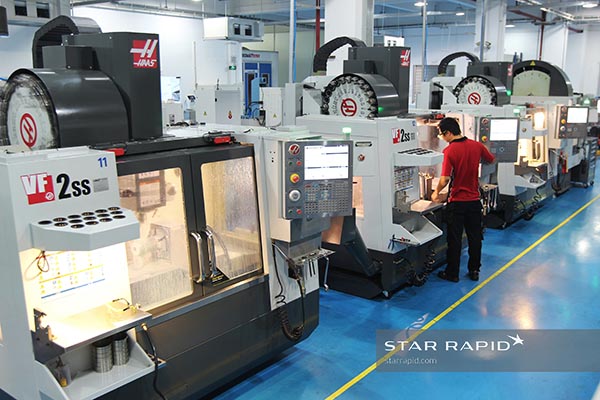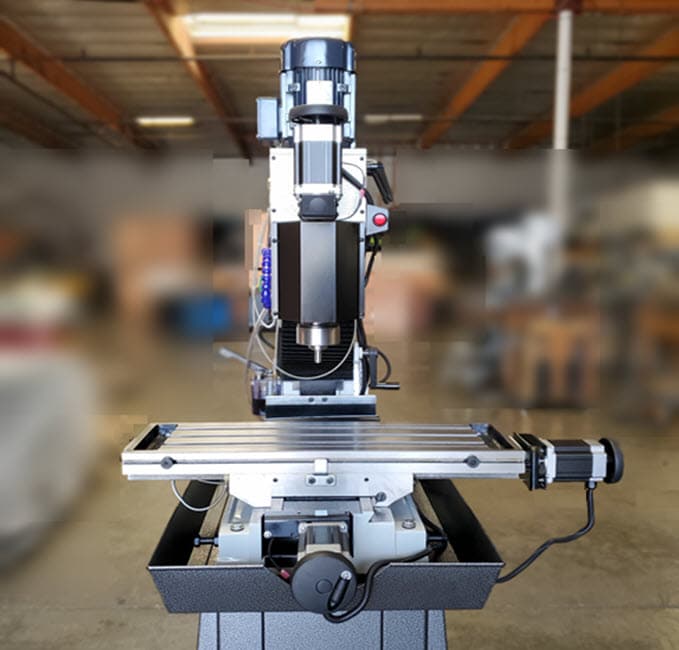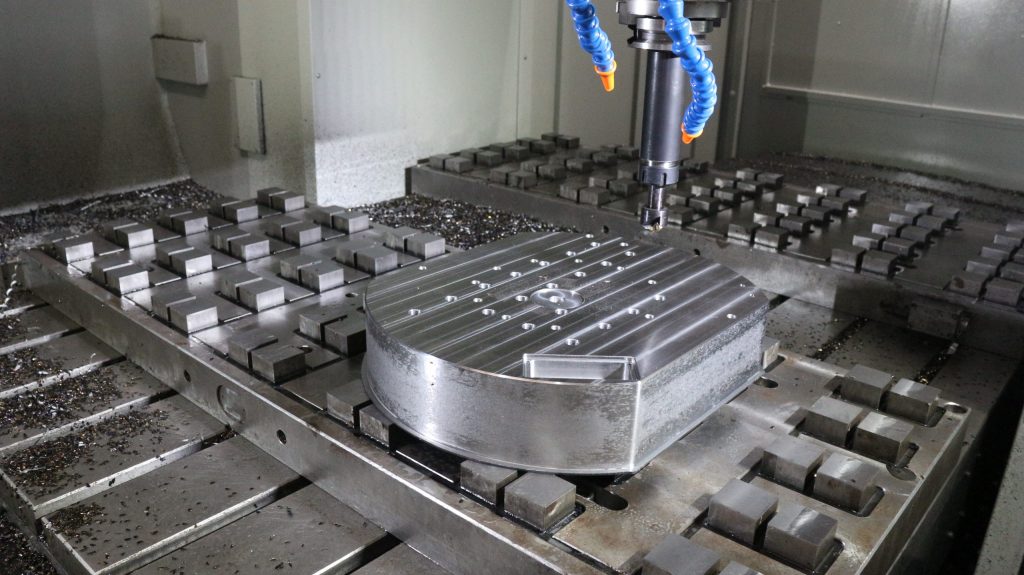Table of Contents
CNC milling machines have revolutionized the manufacturing industry, offering precision and speed that is unmatched by traditional machining methods. But how exactly do these machines work? In this article, we will delve into the inner workings of a CNC milling machine and explore the processes that make it such a valuable tool in modern manufacturing.
From the input of computer-aided design (CAD) files to the cutting and shaping of raw materials, we will take a step-by-step look at each stage of the CNC milling process. Whether you are a student of engineering, a machining enthusiast, or simply curious about the technology that shapes our world, this article is a must-read for anyone interested in CNC milling.
A CNC (Computer Numerical Control) milling machine operates by using a computer program to control the movement of a cutting tool. The machine uses a series of motors and gears to move the spindle and cutting tool in three directions: X, Y, and Z. The computer program controls the speed and direction of the motors, which in turn move the cutting tool across the surface of the material being machined. The CNC milling machine can produce complex shapes and designs with high precision and accuracy.
How Does a CNC Milling Machine Work?
A CNC (Computer Numerical Control) milling machine is a versatile tool used in the manufacturing industry to create complex shapes and designs with high precision. This article will provide a detailed overview of how a CNC milling machine works and its various components.
1. Computer-Aided Design (CAD)
The first step in using a CNC milling machine is to create a digital design using Computer-Aided Design (CAD) software. The design is then saved in a file format that the CNC machine can read.
The CAD software allows the user to create complex designs with high precision. The software can also simulate the milling process to ensure that the design is feasible and can be manufactured.
2. Computer-Aided Manufacturing (CAM)
Once the design is created, the next step is to use Computer-Aided Manufacturing (CAM) software to convert the design into machine-readable code. The CAM software creates a toolpath that the CNC machine will follow to create the desired shape.
The toolpath includes information about the cutting tool, the speed of the spindle, and the direction of the cut. The CAM software also optimizes the toolpath to ensure that the milling process is efficient and accurate.
3. CNC Controller
The CNC controller is the brain of the CNC milling machine. It receives the machine-readable code generated by the CAM software and translates it into electrical signals that control the movement of the machine.
The CNC controller controls the movement of the cutting tool, the speed of the spindle, and the direction of the cut. It also monitors the milling process and makes adjustments to ensure that the final product is accurate.
4. Cutting Tool
The cutting tool is the part of the CNC milling machine that actually cuts the material. The cutting tool is mounted on a spindle that rotates at high speeds to remove material from the workpiece.
There are different types of cutting tools available for CNC milling machines, including end mills, ball nose mills, and drills. The cutting tool is chosen based on the material being machined and the desired shape of the final product.
5. Workpiece
The workpiece is the material being machined by the CNC milling machine. The workpiece is mounted on a table that moves in the X, Y, and Z directions to allow the cutting tool to remove material and create the desired shape.
The workpiece can be made of various materials, including metal, plastic, and wood. The CNC milling machine can create complex shapes and designs with high precision, making it ideal for manufacturing parts and components.
6. Spindle
The spindle is the part of the CNC milling machine that holds the cutting tool. The spindle rotates at high speeds to remove material from the workpiece.
The spindle speed can be adjusted based on the material being machined and the desired shape of the final product. The spindle can also be equipped with different types of cutting tools to create different shapes and designs.
7. Coolant System
The coolant system is an essential part of the CNC milling machine. The coolant system keeps the cutting tool and workpiece cool during the milling process, which reduces friction and prevents overheating.
The coolant system also helps to remove chips and debris from the cutting area, which improves the accuracy of the milling process. The coolant system can be water-based or oil-based, depending on the material being machined.
8. Safety Features
CNC milling machines have several safety features to protect the operator and prevent accidents. These safety features include emergency stop buttons, interlocks, and safety guards.
The emergency stop button allows the operator to quickly stop the milling process in case of an emergency. The interlocks prevent the machine from operating if the safety guards are not in place.
9. Benefits of CNC Milling Machines
CNC milling machines offer several benefits over traditional milling machines. CNC milling machines can create complex shapes and designs with high precision, which is not possible with traditional milling machines.
CNC milling machines are also more efficient and accurate than traditional milling machines. They can produce parts and components faster and with higher accuracy, which reduces manufacturing time and costs.
10. CNC Milling Machine vs. Traditional Milling Machine
CNC milling machines and traditional milling machines have several differences. Traditional milling machines are manually operated, while CNC milling machines are fully automated.
CNC milling machines can create more complex shapes and designs with high precision, while traditional milling machines are limited to simpler shapes and designs. CNC milling machines are also more efficient and accurate than traditional milling machines, making them ideal for manufacturing parts and components.
In conclusion, a CNC milling machine is a versatile tool used in the manufacturing industry to create complex shapes and designs with high precision. The CNC milling machine works by following a toolpath generated by Computer-Aided Design (CAD) and Computer-Aided Manufacturing (CAM) software. The CNC milling machine offers several benefits over traditional milling machines, including higher precision, efficiency, and accuracy.
Frequently Asked Questions
In this section, you will find answers to some of the most common questions about how a CNC milling machine works.
What is a CNC milling machine?
A CNC (Computer Numerical Control) milling machine is a computer-controlled machine tool that can create complex shapes and parts from raw materials. The machine operates by removing material from a workpiece by rotating a cutting tool in a specific direction.
The machine is controlled by a computer program that contains instructions for the machine’s movements and operations. This program can be created by a designer using specialized software, or it can be downloaded from a library of pre-made programs.
How does a CNC milling machine work?
A CNC milling machine works by using a cutting tool to remove material from a workpiece. The workpiece is mounted on a table that moves in different directions, allowing the cutting tool to remove material from specific areas.
The machine is controlled by a computer program that specifies the exact movements and operations needed to create the desired shape or part. The program sends signals to the machine’s motors, which move the cutting tool in the correct direction and at the right speed.
What materials can be cut with a CNC milling machine?
A CNC milling machine can cut a wide range of materials, including metals, plastics, and wood. The machine is capable of cutting hard materials like titanium and stainless steel as well as softer materials like aluminum and plastic.
The machine uses different cutting tools and techniques depending on the material being cut. For example, a diamond-coated cutting tool may be used for cutting hard materials, while a high-speed steel cutting tool may be used for cutting softer materials.
What are the advantages of using a CNC milling machine?
There are several advantages of using a CNC milling machine. One of the biggest advantages is the ability to create complex shapes and parts with a high degree of accuracy. The machine is also capable of producing parts quickly and efficiently, which can save time and money.
Additionally, the machine can be programmed to create identical parts repeatedly, ensuring consistency and reducing the risk of errors. The machine can also be operated with minimal human intervention, which can reduce the risk of accidents and injuries.
How do you maintain a CNC milling machine?
To maintain a CNC milling machine, it is important to keep the machine clean and well-lubricated. The cutting tools should be inspected and replaced regularly, and the machine’s motors and other components should be checked for wear and tear.
The machine’s computer program should also be updated regularly to ensure that it is running efficiently and accurately. Additionally, the machine should be operated within its recommended parameters to avoid damage or malfunction.
In conclusion, a CNC milling machine is a powerful tool that is used in various industries to create complex parts and designs with precision and accuracy. The process starts with the design of the part, which is then translated into a code that the machine can understand. Once the code is loaded into the machine, the milling process begins, where the cutting tool removes material from the workpiece until the desired shape is achieved.
Overall, CNC milling machines have revolutionized the manufacturing industry by enabling the production of intricate parts that would have been impossible to create by hand. With their ability to work with a variety of materials and produce consistent results, they have become an essential tool for businesses looking to optimize their production processes and create high-quality products. As technology continues to evolve, the capabilities of CNC milling machines will only continue to improve, making them an even more valuable asset for businesses in the future.
In conclusion, understanding how a CNC milling machine works is crucial for anyone interested in manufacturing or engineering. Whether you are a designer, engineer, or technician, having a solid understanding of the milling process and the capabilities of these machines can help you create better products and streamline your manufacturing processes. With their precision, accuracy, and versatility, CNC milling machines are sure to play a vital role in the future of manufacturing and engineering.
Request a quote today!
[contact-form-7 id="1578" title="Contact form"]
Please compress the file into a ZIP or RAR file before uploading. Alternatively, send through your RFQ by email.
enquires@unitymanufacture.com





